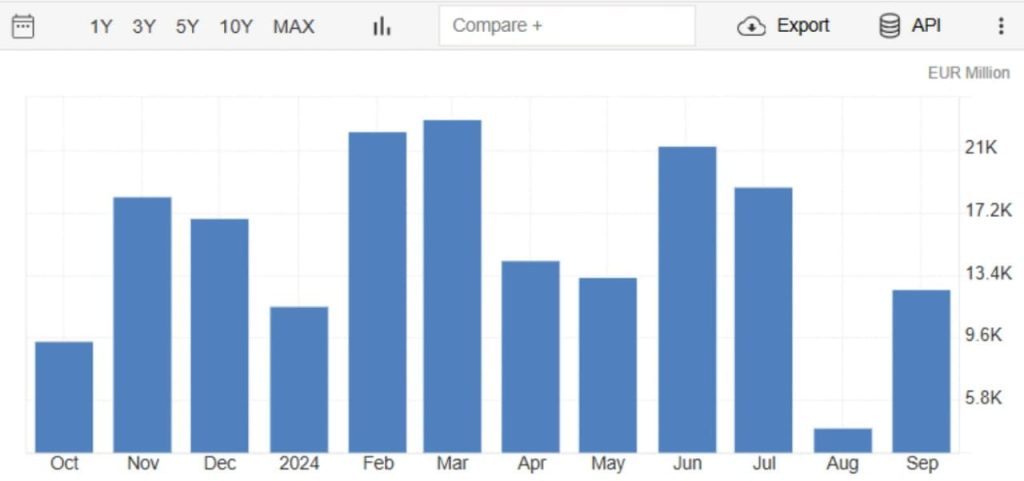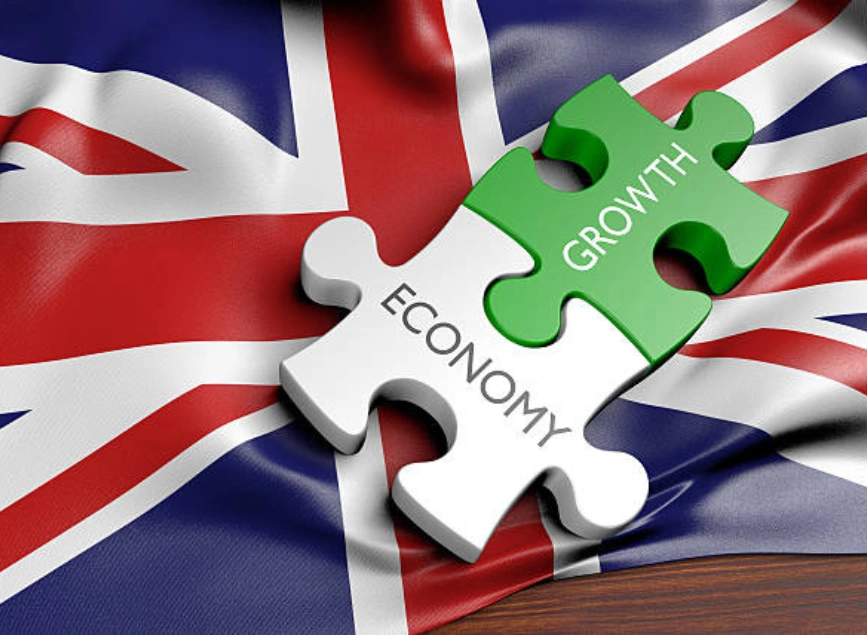
Euro Area and EU Trade Surpluses Show Strong Growth in September 2024
In September 2024, the Euro Area recorded a notable increase in its trade surplus, which expanded to €12.5 billion, up from €9.8 billion in the same month of 2023. This positive trend exceeded market expectations, which had anticipated a surplus of just €7.9 billion. The growth was driven by a modest 0.6% rise in exports, which totaled €237.8 billion, and a 0.6% drop in imports, which decreased to €225.3 billion. The data points to a healthy trade balance, suggesting that the Euro Area is continuing to navigate global economic challenges successfully.

EU’s Trade Surplus and Export Growth
The European Union also saw a strong performance in September 2024, with a trade surplus of €9.6 billion, up from €7.3 billion a year earlier. EU exports rose by 0.8% to €212.6 billion, bolstered by higher sales in several key sectors. Notably, exports of chemicals and related products surged by 10%, while food and drink exports increased by 2.5%. Additionally, other manufactured goods saw a slight rise of 0.4%. This growth in exports signals resilience in the EU’s trade sector, despite global economic pressures and shifting market conditions.
Positive Performance with Major Trading Partners
The EU’s export performance was particularly strong in its key markets. Exports to the United States saw a significant increase of 8.9%, reflecting ongoing demand for European goods. Similarly, exports to the UK rose by 2%, and shipments to Switzerland grew by 5.1%. However, not all markets performed as well. Exports to China, one of the EU’s largest trading partners, dropped by 4.2%, highlighting the economic slowdown and challenges facing China’s market. Despite this, the overall export performance remained positive, thanks to growth in other regions.
Decline in Imports Driven by Energy
On the import side, the EU saw a slight decline of 0.3%, bringing total imports to €203.1 billion in September 2024. The main factor contributing to this drop was a sharp 20% reduction in energy imports, reflecting lower demand for energy resources in the region. The decline in energy imports aligns with the EU’s efforts to transition to greener energy sources and reduce reliance on fossil fuels. Additionally, imports from key partners such as the US, UK, and Switzerland also saw reductions. Purchases from the US fell by 4.9%, while imports from the UK and Switzerland dropped by 10.7% and 6.4%, respectively. On the other hand, the EU’s imports from China saw an uptick, rising by 12.5%, indicating stronger demand for Chinese goods in the region.
Conclusion
Overall, the Euro Area and EU trade data for September 2024 paints a picture of economic resilience. The growing trade surpluses and moderate increase in exports highlight the EU’s ability to maintain a competitive edge in global markets. However, the decline in imports, particularly in energy, and the challenges faced in the Chinese market, suggest that the EU must continue to adapt to shifting global conditions. As the region moves forward, its trade balance and export growth will be key indicators of its ongoing economic health.
Share
Hot topics

What Is the US Dollar Index (DXY) in Forex?
If you’ve spent any time exploring global markets, you’ve certainly heard about the US Dollar Index, known as DXY. For many beginner traders, it appears to be one of those...
Read more




Submit comment
Your email address will not be published. Required fields are marked *